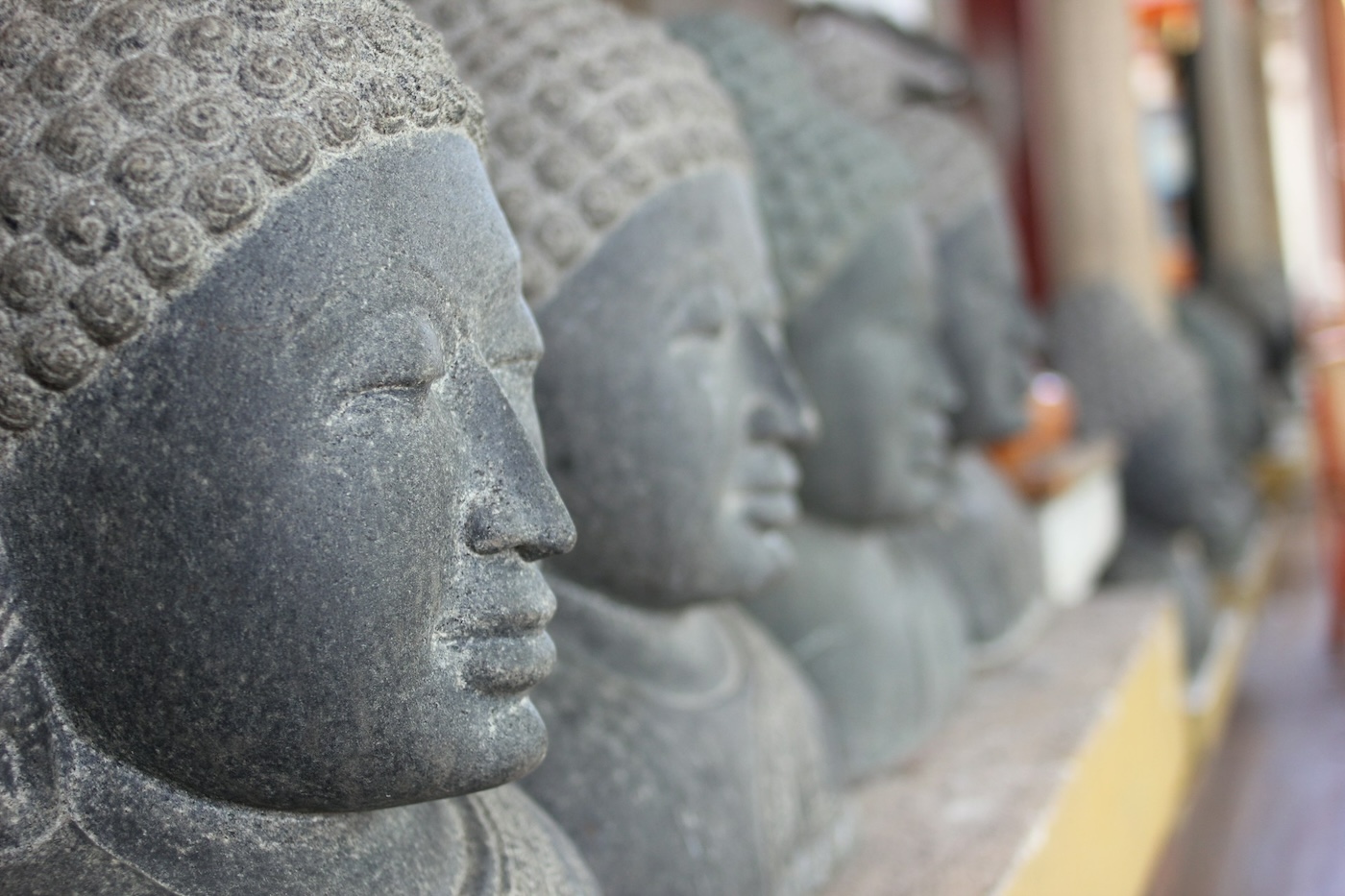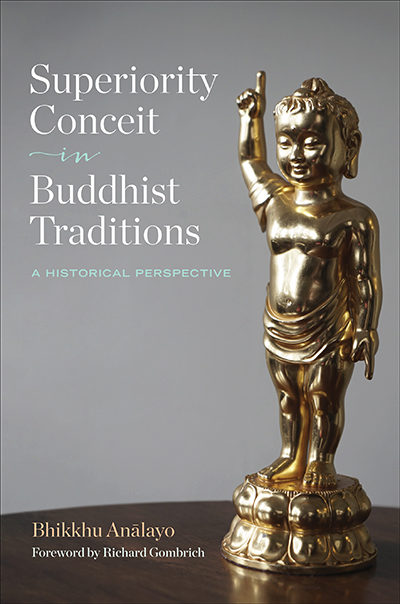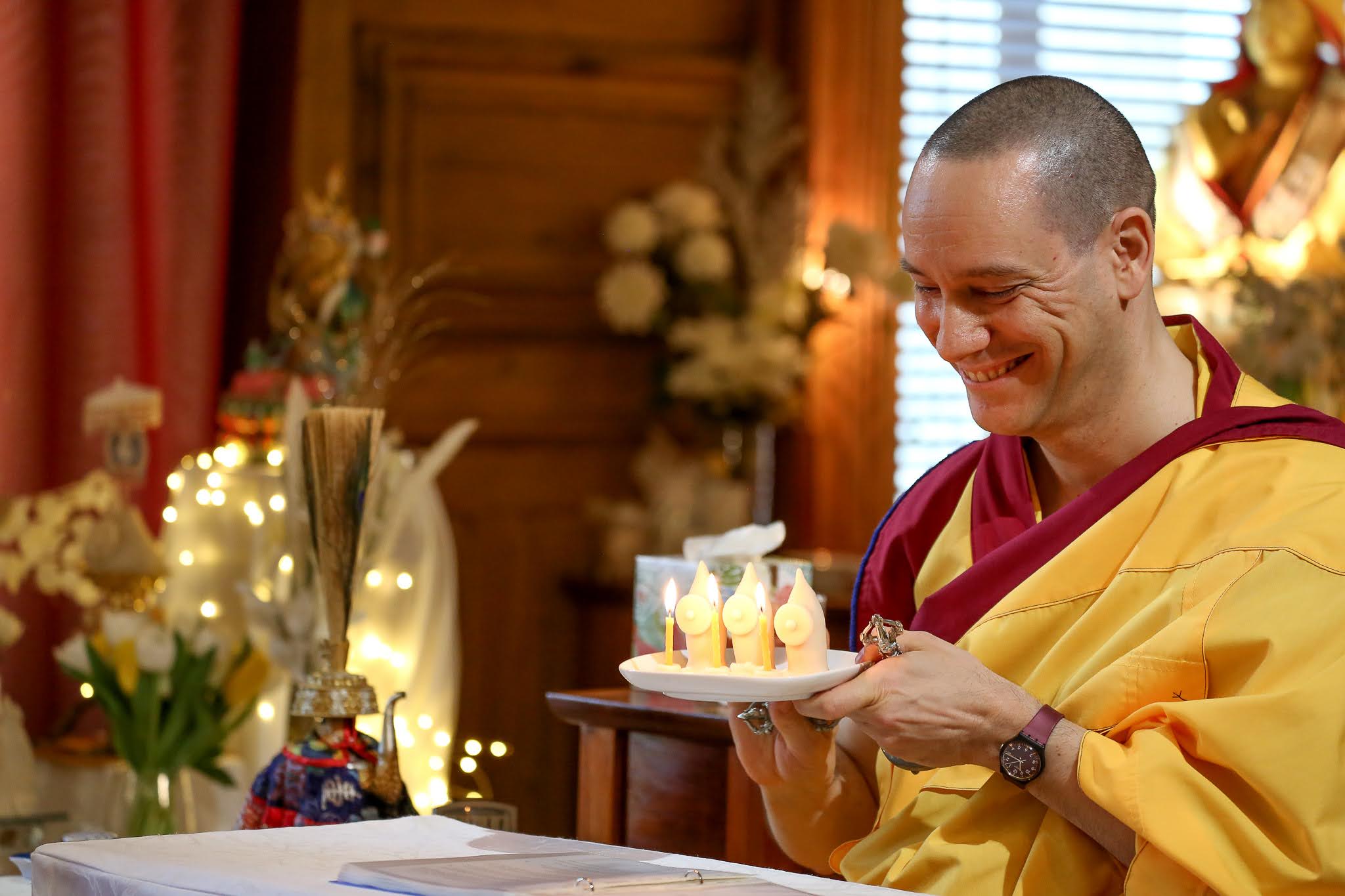A Caution Against Superiority Conceit
An argument to abandon preconceived prejudices against different Buddhist traditions. The post A Caution Against Superiority Conceit appeared first on Tricycle: The Buddhist Review.

Probably all Buddhist traditions would agree in principle that superiority conceit is a detrimental mental condition and better overcome. Yet, the historical reality of various forms of Buddhism reflects recurrent manifestations of superiority conceit. These can take the form of gender discrimination or of dismissive attitudes toward other Buddhist traditions. When confronted with the forms of conceit, time and again I found that an understanding of the religious and historical conditions responsible for a particular situation was both sobering and liberating. Insight into the why and how of certain aspects of the Buddhist traditions can help to see these in the proper perspective and find ways to adjust. For this reason, I hope that the material presented here will be helpful to the reader, enabling a more informed perspective and consequently a letting go of ignorance and conceit.
Various forms of daily discrimination toward women who have renounced lay life [exist] in Theravada countries. The main problem remains their ambiguous position between the lay and the monastic world. This in-between status can find reflection, for example, in the type of dress worn. The nuns of Myanmar often wear pinkish colored robes, a color never worn by bhikkhus, and the nuns of Thailand wear only white, similar to lay people on observance days. Nuns in both countries usually do not officiate at public ceremonies or preach in public. Whereas nuns in Sri Lanka take ten precepts, in Thailand they usually only take eight, another similarity to the practice of lay people on an observance day. The Thai government denies the nuns the right to vote, in line with the custom that monastics do not vote, but at the same time does not concede them the benefit of free travel on public transport, a privilege accorded to bhikkhus.
The bhikkhuni ordination lineage was transmitted from India to Sri Lanka and from there to China, although the latter transmission appears to have happened in a way that does not fully satisfy strict Theravada legal requirements. Due to the subsequent decline of the order of bhikkhunis in India and Sri Lanka, since the time of the eleventh century, there appear to have been no more bhikkhunis ordained according to Theravada law who could have collaborated with a Theravada order of bhikkhus in granting ordination to a female candidate.
Depictions of the Buddha in the early texts do not present him as a paragon of masculinity, unlike later texts. According to a listing of impossibilities, a woman cannot be a Buddha. Although probably originating from leadership conceptions in the ancient Indian setting, where a female stood little chance of being recognized as an accomplished teacher, the idea of such an impossibility could easily have fostered a tendency to belittle women’s abilities. This had an impact in particular on conceptions of the path to Buddhahood, in that the accomplishment of an advanced bodhisattva came eventually to be seen as manifesting in the leaving behind of the female body in order to continue for the rest of his career as a male.
The various strands of negativity toward women that emerge in this way are not in conformity with the early teachings. After the Buddha’s passing away, it was perhaps natural for ensuing generations of Buddhist monastics to move more in line with general biases prevalent in the patriarchal setting of ancient India, in their attempt to ensure the survival of the fledgling tradition in the face of competition with other religious groups and under the threat of internal disintegration.
Thanks to the efforts of the Buddhist monastic institutions over many centuries the teachings and discipline have been transmitted until today. Without in any way intending to turn a blind eye to this remarkable achievement of past generations, it nevertheless needs to be recognized that to insist on perpetuating outdated hierarchies based on male superiority conceit is not in keeping with the demands of current times and is detrimental to the welfare of the Buddhist traditions it seeks to protect.
AMahayana Buddhist superiority conceit] finds expression in the belief that membership in the Great Vehicle, the Mahayana, automatically confers superiority over anyone else who does not aspire to Buddhahood.
The need for an authentication of Mahayana texts as teachings of the historical Buddha appears to be responsible for the emergence of Hinayana [the Lesser Vehicle] rhetoric. The distinction between those who follow the bodhisattva path and those who do not aspire to future Buddhahood is a vocational one and needs to be differentiated from monastic ordination taken in any of what are conventionally called the eighteen schools of Buddhism. The usage of the term “Hinayana” has its origin in polemics and lacks a grounding in the historical reality of Indian Buddhism. It cannot be used to refer to the Theravada traditions, as some Theravadins have been and still are practitioners of the bodhisattva path. Nor can it be applied to early Buddhism, as during that period the bodhisattva path had not yet come into existence. This leaves no basis for the application of a term that concerns the decision whether or not to pursue such a path.
The true seal of authentication for any Buddhist practitioner can be found by putting into practice the central discovery of the historical Buddha: emptiness, or not self.
The employment of the term “Hinayana” has a counterpart in claims to the superiority of bodhisattvas, actively encouraged in various texts through comparisons and illustrations expressive of contempt for those who are not in pursuit of Buddhahood. The same tendency to belittling can also find employment in the context of rivalry among different Mahayana traditions. Besides the need to set aside the term “Hinayana” in clear recognition of its polemical origins, historical unreality, and discriminatory nature, there is also a need to leave behind the underlying attempt to authenticate scripture through untenable attributions to the historical Buddha.
In sum, the significant contributions made by Mahayana thought to Buddhism would shine forth more brightly if they could be divested of the blemish of superiority conceit.
The next manifestation of superiority conceit] takes the form of assuming that membership in the Theravada tradition automatically implies being the true heir to the Buddha’s original teachings. As evidence that this notion lacks a foundation, there are several aspects of the Path of Purification, the Visuddhimagga, a key manual of the path compiled by Buddhaghosa in the fifth century, that involve some departure from early Buddhist thought. My point is not to imply a wholesale rejection but only that this work offers a distinctly Theravada perspective, which at times differs from the early Buddhist position.
[One of which] is the widespread belief among later generations of Buddhists that the Buddha was omniscient. The notion of the comprehensiveness of knowledge that underlies the idea of omniscience appears to have been a central undercurrent in the arising of Abhidharma, which the Theravadins—just as other Buddhist traditions—consider to have been taught by the historical Buddha himself. This attribution involves forms of textual authentication similar to those evident in Mahayana Buddhist traditions discussed previously.
Shifts in perspective from early Buddhism to Theravada affect the understanding of mindfulness as well as its cultivation when observing the breath. Changing understandings are similarly evident in the meditative development of the divine abodes [goodwill, compassion, rejoicing in others’ fortune, and equanimity]. Differences in viewpoints can also be discerned in relation to key doctrines of early Buddhist thought, namely dependent arising, impermanence, dukkha [suffering], and not self.
Distinct Theravada viewpoints on meditation-related topics, found in the Visuddhimagga, have in turn influenced contemporary meditation teachings. They stand in the background of current vipassana meditation traditions that have provided the starting point for the global spread of secular applications of mindfulness. In this way, differing perspectives keep emerging from ancient to modern times, showing that Theravada doctrines and practices have evolved and continue to evolve in response to various causes and conditions. Although in itself only natural, this undermines the superiority conceit of assuming that the Theravada tradition is the sole true representative of what the Buddha originally taught.
My last area of exploration is Secular Buddhism, which at times comes with the conceit of superiority over other Buddhist traditions. Just as in the last section I focused on Buddhaghosa and his work at exemplifying trends in Theravada exegesis, in this section I focus on Stephen Batchelor as the foundational proponent of Secular Buddhism. In both cases the main thrust of my exploration is to try to ascertain to what extent certain ideas reflect early Buddhist thought, given that both Buddhaghosa and Stephen Batchelor operate from the implicit or explicit position of accurately representing the teachings of the historical Buddha.
[Contrary to Secular Buddhist thought,] the construction of the concept of “Buddhism” appears to have taken place on Asian soil at an early time, rather than being a nineteenth-century idea invented in the West. Already the early discourses reflect the sense of some degree of institutional Buddhist identity, sufficient for it to be considered an -ism. The monastic Sangha as the third refuge of a Buddhist is an early element, as is the notion that the Buddha, as the first refuge, had eradicated all defilements when realizing nirvana on the night of his awakening. The attainment of levels of awakening does not imply a transcendence of a concern with adhering to rules of moral conduct.
Although the doctrine of rebirth, [a matter cast aside in Secular Buddhism,] need not be accepted on blind faith, its implications need to be understood in order to be able to make sense of the early Buddhist teachings. This holds even for the key teaching of the four noble truths. The sequence of presentation of the four truths appears to reflect an ancient Indian model of medical diagnosis and hence is not in need of reordering. Moreover, current academic research on the formulation of the Buddha’s first teaching does not imply that the notion of truth as such is a later element.
Stephen Batchelor’s secular “Buddhism without beliefs” turns out to be rather his secular beliefs without Buddhism. Instead of being an innocent questioning of outdated religious dogmas, his writings inadvertently continue Christian missionary strategies originally developed to undermine Buddhism.
The appeal of this approach among those unaware of the misunderstandings involved appears to be in part related to a resonance with an iconoclastic attitude. Such an attitude is a natural result of the experience of cognitive dissonance from the encounter between two different cultures, in the present case the Western worldview encountering certain Asian Buddhist teachings. The resultant rebelliousness against anything perceived as “religious” on the side of those influenced by Western materialist values combines with the relative newness of Buddhism in the West and hence the comparatively short period of exposure to its ideas. Yet, perhaps by now the time has come for Western Buddhists to enter into a more mature relationship with the teachings and with other Buddhist traditions, letting go of superiority conceit and finding a middle path aloof from the two extremes of blind acceptance and equally blind rejection.
tI is simply a form of bondage for men to look down on women as not fit to take monastic leadership roles or be advanced bodhisattvas, for those who intend to become future Buddhas to look down on those not aspiring for Buddhahood as inferior, for Theravadins to look down on others as deviant from the original true teaching, or for Secular Buddhists to look down on traditional Buddhists as stagnant dogmatists caught up in rituals who lack a proper understanding of the teachings of the historical Buddha.
Following the Buddha’s example and putting his vision into practice requires stepping out of all of these forms of superiority conceit. Women must be accorded the full right to embark on the monastic life and to be recognized as advanced bodhisattvas. The derogatory attitude implicit in “Hinayana” rhetoric is not compatible with genuine compassion and to some extent even runs counter to progress to Buddhahood, which after all is about giving up conceit. The claim by followers of the Pali tradition to be the sole true heirs of the Buddha is also not conducive to growth in the qualities required for awakening. Western Buddhism is just another branch growing from the bodhi tree, neither intrinsically better nor intrinsically worse than Asian Buddhist traditions.
Instead of appropriating the historical Buddha to authenticate one’s personal or group beliefs, the true seal of authentication for any Buddhist practitioner can be found by putting into practice the central discovery of the historical Buddha: emptiness, or not self. It is by diminishing ego, letting go of arrogance, and abandoning conceit that one becomes a better Buddhist, no matter what tradition one may follow.
♦

This excerpt was adapted from Superiority Conceit in Buddhist Traditions: A Historical Perspective with permission from Wisdom Publications (2021). For more on this topic, Bhikkhu Anālayo responds to critical reviews in the Journal of Buddhist Studies (December 2023) article, “Superiority Conceit in Buddhist Traditions: A Survey of Reviews.”

 Troov
Troov 
































